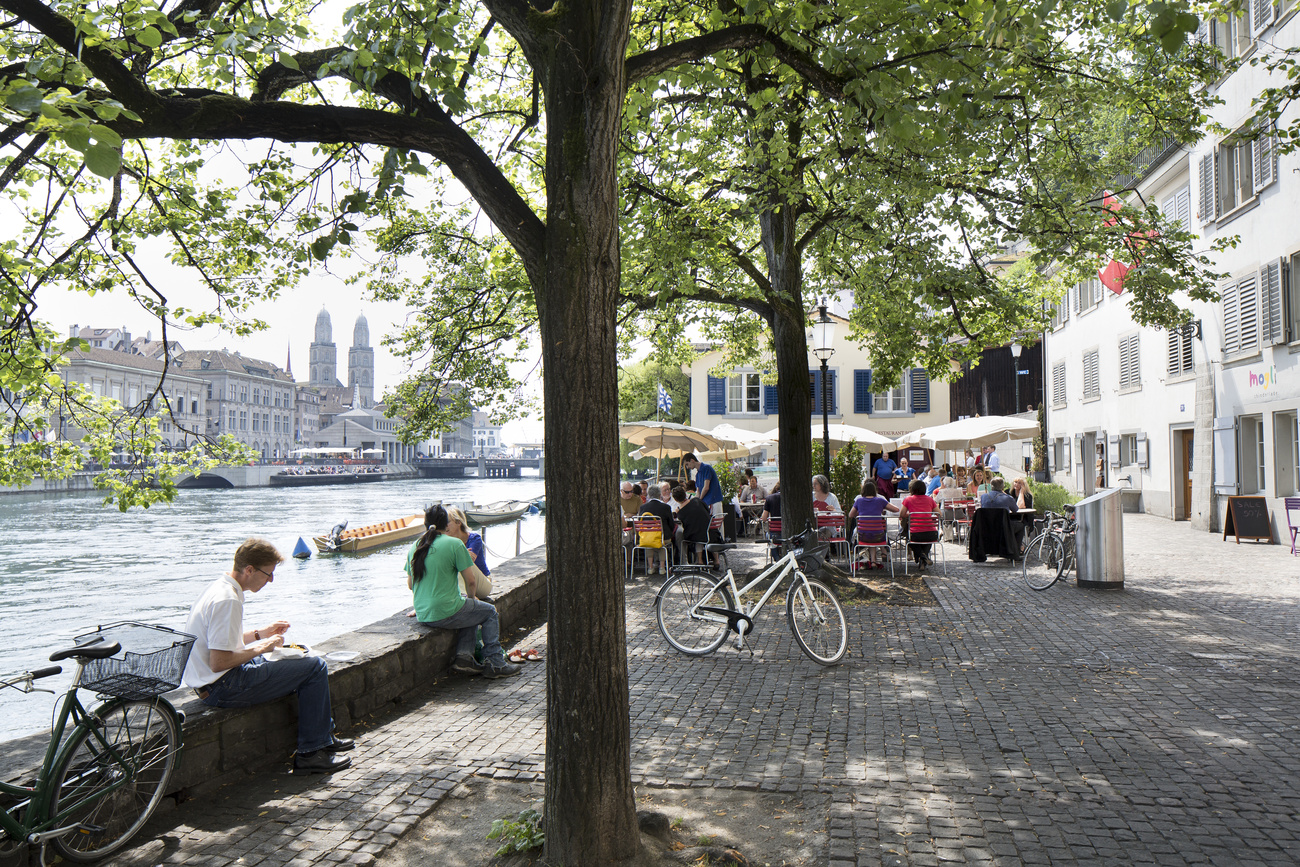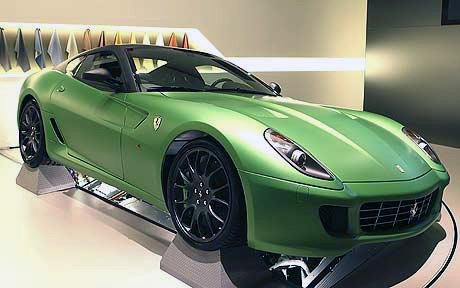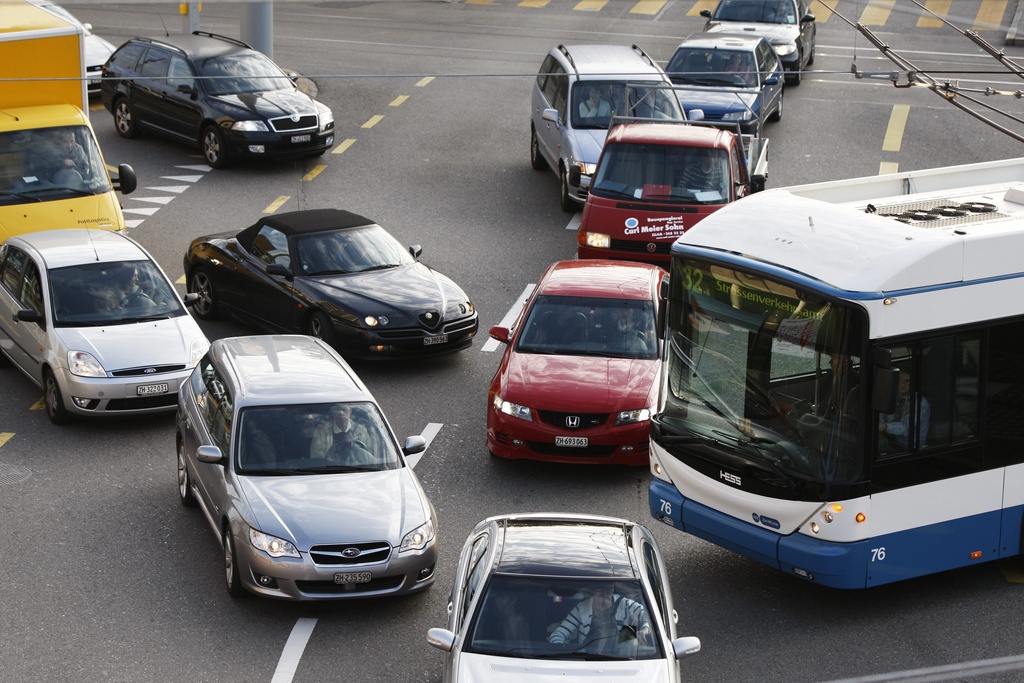Small is beautiful at Geneva motor show

The fleet of new small cars at this year’s Geneva motor show confirms a growing trend towards downsizing in the global motor industry.
Almost all big carmakers, including premium brands, are betting their future on smaller models as they compete for a slice of the compact sector, which should account for more than half of the global market by 2016.
There has been a roadblock at the Audi stand at this year’s 80th Geneva International Motor Show.
The firm drove back with great fanfare into the crowded small car sector in their new A1 with pop superstar Justin Timberlake at the wheel. The A1, with a full range of luxury features and optional extras, hopes to go bumper to bumper with the Mini.
On another petite podium Nissan showed off a revamped version of its classic Micra. The Japanese firm wants to sell one million Micras a year across 160 countries by 2013, reaping cost and scale benefits by producing it at four plants in India, Thailand, China and Mexico.
Elsewhere, Renault unwrapped the Wind, a tiny two-door convertible, Chevrolet flaunted the Spark, and Fiat’s 500C got the go-faster Abarth two-tone treatment.
Mini went for a spin into the compact crossover sector with its chunky 4×4 Countryman to compete with cars like the new Nissan Juke.
And even 007 favourite Aston Martin got in on the act with its luxurious leather-clad Cygnet, which costs €40,000 (SFr58,400), but is restricted to current Aston owners only.
“There is much more on offer this year,” Renault Chief Operating Officer Patrick Pelata told swissinfo.ch. “There are lots of small compact cars; it’s a sign the EU market is moving away from the previous century.”
Industry analysts estimate that small cars will make up over half of the global market by 2016. Even in the United States, which by tradition favours larger gas-guzzlers, the sector is due to grow from less than a fifth to about a quarter of the market by then.
Green pressures
The shift towards ever smaller cars is driven by various factors: growing urbanisation, ageing populations in rich countries, and demand for entry-level cars in emerging markets, as well as the squeeze from CO2 regulation around the world.
“In the next ten years the real trend will be downsizing and small cars for big megacities,” said Frank Schwope, a motor industry analyst at German bank NordLB.
Carlos da Silva, automotive analyst at Global Insight, felt pressure to cut CO2 emissions and fuel consumption, with tough limits looming in Europe and the US, was the primary reason.
“Basically, they have no choice,” he told swissinfo.ch. “All carmakers are impacted by future regulations. Fiat, Peugeot and Renault have a shorter road to travel, but companies like Audi, BMW and Mercedes now also have to meet tough regulations.”
EU legislation requires carmakers to limit average fleet emissions to 95 grams by 2020.
Da Silva also thought younger drivers now had a much “greener” outlook and heavy SUVs had gone “out of fashion”.
General Motors Vice Chairman Bob Lutz agreed there was a clear shift towards smaller vehicles and thriftier engines as generations change.
“I would estimate that in another ten or 15 years there will be very little size difference in the average vehicle in a highly developed wealthy European market like Germany and the United States,” the 78-year-old industry veteran told AFP.
Honey, I shrunk the engine
But it is not just about shrinking bodywork; downsizing is also evident under the bonnet.
Most firms are now fitting their “next generation” cars with smaller and more-efficient engines, even in bigger models.
Fiat, Opel, Ford, Volkswagen, Mercedes and BMW all have examples at the show, with six or even four cylinders replacing eight.
Fiat has gone even further. Its 500 Twin Air Lounge, with a new two-cylinder petrol engine, claims it that will cut CO2 emissions by 30 per cent compared with models of similar power.
The Italian company is the first to use a 2-cylinder motor in a current European car model. But Volkswagen, Daimler, Peugeot Citroen and Renault are fast on its tail, all planning new three cylinder engines in the next few years.
“Typically a city car running with a 1.4-litre petrol engine is now a 1.2 litre with a very technological advanced engine with turbo charger or direct injection for the sake of fuel efficiency,” said da Silva. “It’s the best way of improving without changing everything.”
Simon Bradley in Geneva, swissinfo.ch
The best-selling car in Switzerland is the VW Golf. After VW, the most popular brands are Audi, Renault, Ford, Opel and Toyota.
In 2009 Swiss garages sold 266,018 cars – 7.8 per cent fewer than in 2008. But there are signs that sales have started to pick up: +5.8 per cent in January 2010, compared with a year earlier.
There are some 4.6 million cars in circulation in Switzerland. Since 1970 the number of vehicles per 1,000 inhabitants rose steadily. But this figure dropped from 610 in 2008 to 597 last year.
On March 4, Swiss President Doris Leuthard opened the 80th Geneva International Motor Show, which ran until March 14.
Some 100 world and European premieres are announced, with 16 dedicated to electrical cars alone. Around 40 per cent of visitors travel from outside Switzerland, with many from neighbouring Germany, France and Italy.
The organisers claim that the Geneva Motor Show generates SFr300 million ($254.3 million) in direct and indirect income.
The show reported more than 692,000 visitors at its close, up 7% on last year. More than 11,000 representatives from the media attended.

In compliance with the JTI standards
More: SWI swissinfo.ch certified by the Journalism Trust Initiative















You can find an overview of ongoing debates with our journalists here . Please join us!
If you want to start a conversation about a topic raised in this article or want to report factual errors, email us at english@swissinfo.ch.